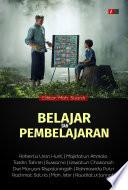
Consequences
Science, Philosophy & the Christian-Islam Ideological Crisis
Decades of research by the authors provides their insights on a wide spectrum of Words of Wisdom, from seventy-five scholars: scientists, philosophers, and theologians. They guide readers through a maze of newly discovered scientific facts, philosophical ideas and theories that led civilization to where we are today. In every heart, there are questions that transcend all differences of culture, nationality, race or religion: Who am I? Where do I come from, and where am I going? Why is there evil in the world? What will there be after this life? With the stakes of our choices in life so high, it would be prudent to make every effort to choose correctly, especially your Worldview. That takes truth and knowledge from many sources, which fortunately today is more readily available. In this dialogue on the key issues that have divided Science and Faith, such as the Creation of the Universe, the Origin of Life and Mankind, Free Will, Consciousness, and Islam vs. Christianity, these writers conclude that Science, Philosophy and the Bible are not only compatible, they are mutually supporting. There is an Ideological War raging between fanatical Islamic and Christian thinking. Muslims will represent one-third of the worlds population by 2050. We had better find a solution to this serious ideological divide. The literalist reading of the Koran and Christian reading of the Bible misconstrues the true meaning of these holy texts. An open dialogue and debate between leading Islamic and Christian scholars might be the best approach to create a reformist movement (like the Reformation in the 16th century) with the next generation of young Muslims. Whatever you do (or dont do) in life, has Eternal Consequences!
- ISBN 13 : 1491784563
- ISBN 10 : 9781491784563
- Judul : Consequences
- Sub Judul : Science, Philosophy & the Christian-Islam Ideological Crisis
- Pengarang : Miriam Fertig, Robert Fertig, Robert Fertig, Robert Fertig, Robert Fertig, Robert Fertig,
- Kategori : Religion
- Penerbit : iUniverse
- Bahasa : en
- Tahun : 2015
- Halaman : 392
- Google Book : https://play.google.com/store/books/details?id=YPaiCwAAQBAJ&source=gbs_api
-
Ketersediaan :
We had better find a solution to this serious ideological divide. The literalist reading of the Koran and Christian reading of the Bible misconstrues the true meaning of these holy texts.









